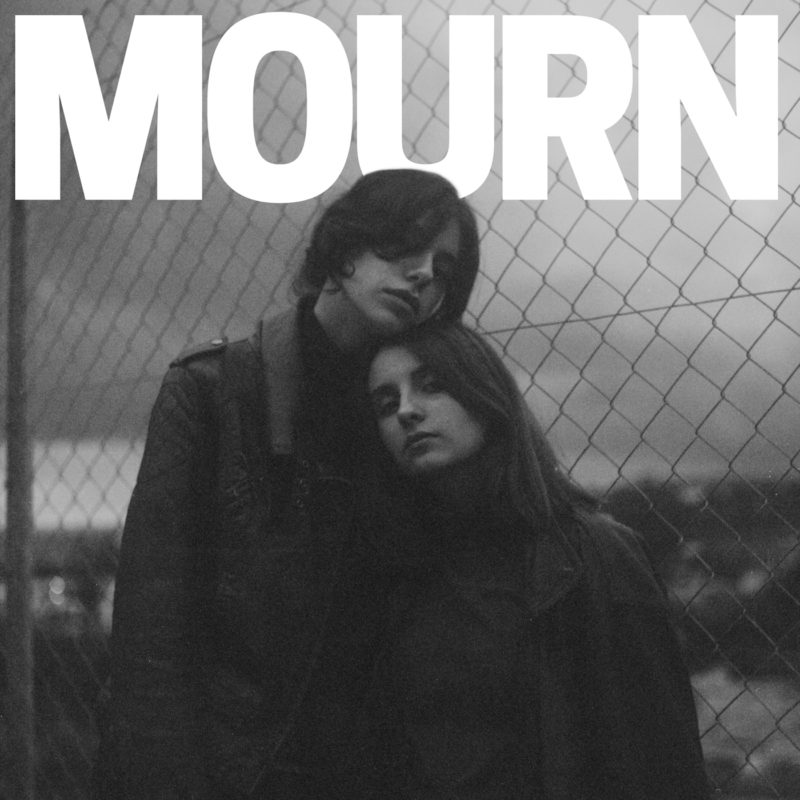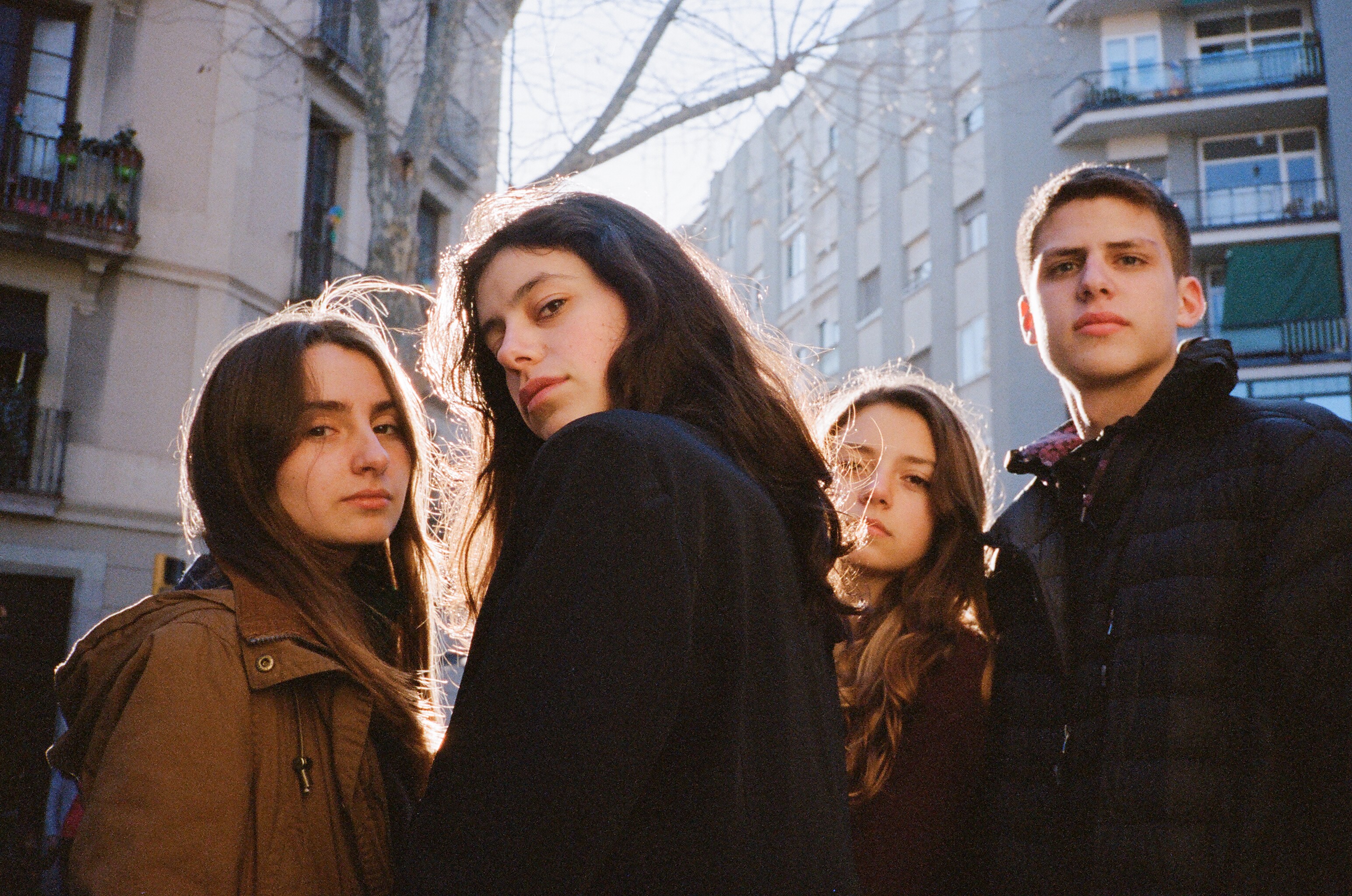MOURN Sign To Captured Tracks, Announce Debut LP, Interviewed By Mike Sniper
In November of last year, two 17-year-old Catalan girls posted a raw and acoustic recording on their YouTube channel — catching the attention of their homeland’s Sones Records with a stark sophistication that was years beyond their age. The two girls went into the studio with recruits Antonio Postius and Leia Rodríguez—and left two days later with a brilliant treatise of indie rock that made them a no-brainer among the ranks of CT’s roster.
Immediately after seeing the band’s scorching live studio set, Captured Tracks has signed the young foursome—setting plans in motion to see a wider release for the LP.
Today, we’re proud to announce the release of MOURN this winter, getting the standard and deluxe Special-Edition treatment. The Special Edition will be pressed on translucent wax, and comes packaged with a bonus colored 7″, limited poster, and button. Click the image below to pre-order, and download digitally at a limited-time special price.
Captured Tracks’ founder Mike Sniper caught up with bandmates Carla Pérez Vas (18) and Jazz Rodríguez Bueno (also 18) to discuss the band’s fruition, their affinity for surrealistic themes, and a wealth of early recordings. Find the interview below!

MIKE SNIPER: Ok, quick and obvious question first: Where did you guys come up with the name of the band? It’s a good one.
CARLA PÉREZ VAS: We just picked up a dictionary and with our eyes closed and pointed to a word. And that was “MOURN.”
SNIPER: Ahh, the Grateful Dead did the same thing. MOURN, Grateful Dead.. when left to chance…. death! Haha.
SNIPER: Catalan or Castilian; which is the first language of everyone in the band? That would be weird if it was Catalan as we used to have a band who only sang in Catalan, Aias.
PÉREZ: We’re Catalan! We all speak Catalan to each other, except Antonio. He speaks more in Castilian because of his Mexican mother.
SNIPER: Thought so! How long have you two (Jazz and Carla) known each other?
PÉREZ: We’ve known each other for two years, more or less. We started thinking of recording an album when Jazz and I met Leia and Antonio… which was about 10 months ago.
SNIPER: I was looking on YouTube when I came across your channel, and noticed some very raw performances with Jazz on the drums. Was this the way you wrote a lot of the songs on the album? How long after writing songs did you make the videos? I like that they exist. Pretty cool to have a document.
PÉREZ: We write them with only guitar and vocals, then Antonio and Leia do their magic. We recorded the videos in the same moment we finished writing the songs. Then we started thinking of recording an album about 10 months ago.
SNIPER: This performance is the first I heard you guys. Is this the recording on the LP?
PÉREZ: This was made on a different day as we recorded the LP, but another day. We came back to the same studio, put on the same places and played just like we did the first time.
SNIPER: You recorded the LP live in the studio, right? How much rehearsal time went into that? Did you have all the arrangements worked out well before?
PÉREZ: Yes, we had all the arrangements worked out well before, so it was just playing the songs all together. In two days we recorded and mixed eight songs. The other two were made after this and we recorded and mixed them in only one day.
SNIPER: Who is Philiphius Van Mousky?
PÉREZ: He’s a very cool poet and painter that we invented. We thought the name “Philliphius” was funny. The song explores his tragic story.
SNIPER: That’s very cool. So, he’s a morose guy, like Edgar Allen Poe? What would his paintings have looked like?
PÉREZ: Philliphius’ paintings would have looked like dark, German expressionism. We decided he was in love with a model, his muse, and he portrayed her in a lot of his paintings. He was a sad man because his love was not reciprocated, which was reflective in his art.
SNIPER: The record is very direct, hard and not drenched in reverb or effects, which is really refreshing to my ears. Were there any records or songs you guys were thinking of trying to get the sound of when going into the studio with the producer/engineer?
PÉREZ: No, it just happened that way. We thought: that’s how we play, that’s what we do, so that’s it.
SNIPER: Smart. “Misery Factory” is one of my faves. Aggressive. Is that a direction you guys are going in as you work on new material?
PÉREZ: I think we’ll keep in line with this more or less. We’re trying to do bass lines more like “Misery Factory,” maybe because we liked the fact that the bass had more protagonism, but we haven’t thought about how will it sound or how we’d like it to sound, we just play and find things we like without thinking too much.
SNIPER: Smart. What are some non-musical influences with the way you approach the band. Movies, TV Shows? Art/writers?
PÉREZ: We love cinema and art in general. Maybe the stories we tell are a little related to that, like the idea of having a squirrel living in someone’s head, or a brain made of candy, the fake story of a painter… But we there isn’t a specific artist we thought about making that.
SNIPER: It reminds me a lot of Spanish surrealistic stuff from the 20’s and 30’s. I suppose that makes sense!
PÉREZ: You’re right! We love it! Now that you mentioned it, we wrote a song called “Surrealista” in Catalan for a Sones’ project called “Minimúsica,” in which national artists make songs and concerts for children.
